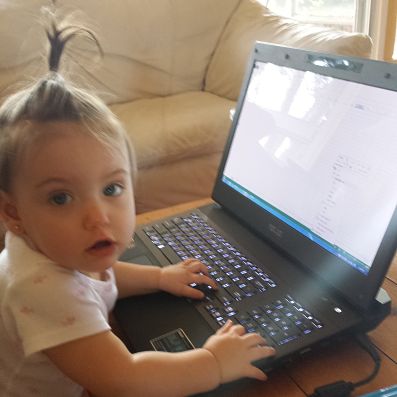I've been a broadcast meteorologist on television since the early 1990's. Happy to answer any questions about the weather or local TV news. Yes, I often wear sneakers on set just out of view of the camera.
Complicated answer, Richard, but a good question. There are quite a few and I really can't give a number off the top of my head. Easily more than a dozen It is complicated because different models offer different solutions. Some are short range, some are longer range. Some are US based, others European and Canada and Japan. To further complicate the issue some models are run as "ensembles" meaning they are run from the basic initial data but small variations are introduced to give different solutions. The basic input data is collected twice a day from about 900 upper air sites, or weather balloons, launched twice a day, noon and midnight Greenwich mean time. The idea is to take a snapshot of the entire planet atmosphere at the same time. Also, more and more data, from satellites and radar for example, is now ingested into the models to varying degrees. A shorter answer is, on a regular day I'll look at three or four.
No problem. Thanks for the information. It could be that a local weather source is using that term. “Officially” the term used by the National Weather Service is a tornado warning, and in some extreme situations a tornado emergency. Thanks again!
Interesting question. A little out of my area as a local meteorologist. You might have some luck looking around the website for National Center for Atmospheric Research. https://ncar.ucar.edu/
Yes. But some would disagree.
Sr. Software Engineer
 Is it basically impossible for a skilled programmer to be out of work these days?
Is it basically impossible for a skilled programmer to be out of work these days?
Chef
 Has anyone ever found anything gross in their food on your watch?
Has anyone ever found anything gross in their food on your watch?
School Bus Driver
 If your bus is in an accident that was ruled your fault, would you lose your job?
If your bus is in an accident that was ruled your fault, would you lose your job?
There is a lot of that out there these days, especially on social media. I’m pretty lucky, doesn’t happen too often. Busted snow forecasts seem to be the worst. I’m in Texas so not as big a problem. Thanks!
Hi, Erin. I’d go to weather.gov (not .com). Click on your area of the map and it will take you to the local National Weather Service office and you’ll see phone and email on the bottom. Good luck.
Great question. A cold air event, like the current one, is a good bit less complicated than rain or snow. With a precipitation forecast there are more factors at play. In general a forecast gets fuzzier the further out it time you go. Broadly speaking the forecast starts with data gathered from weather balloons launched twice a day from about 900 sites around the world. That sounds like a big number but when you consider the size of the earth, and how much of it is covered by water, which is hard to launch a balloon from, that data is pretty sparse. The goal of the balloons is to take a snapshot of the atmosphere at a given moment. It is a fuzzy picture. Think of putting that fuzzy picture on a copy machine. The copy is fuzzier, then make a copy of a copy and so on. So the further out in time the more errors or changes that enter the forecast. Stay warm!
-OR-
 Login with Facebook
Login with Facebook (max 20 characters - letters, numbers, and underscores only. Note that your username is private, and you have the option to choose an alias when asking questions or hosting a Q&A.)
(A valid e-mail address is required. Your e-mail will not be shared with anyone.)
(min 5 characters)
By checking this box, you acknowledge that you have read and agree to Jobstr.com’s Terms and Privacy Policy.
-OR-
 Register with Facebook
Register with Facebook(Don't worry: you'll be able to choose an alias when asking questions or hosting a Q&A.)